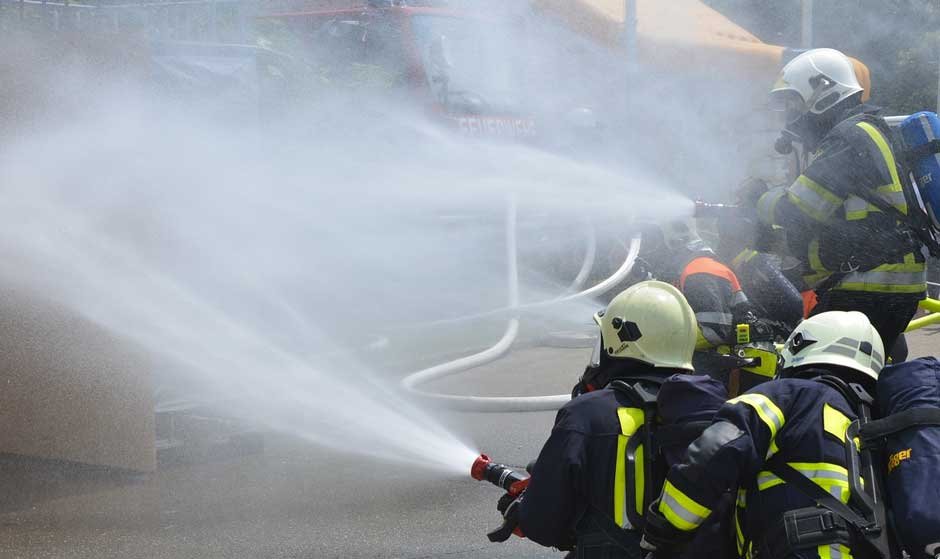The global fire suppressant market has potential, offering many opportunities for businesses to innovate and thrive. With the ever-present threat of inferno-related disasters, the demand for effective blaze suppression solutions has never been higher. This article will explore why it is now an opportune moment for companies to enter and invest in the suppressant market.
Increasing Incidence of Fire-Related Incidents
In recent years, the world has witnessed a surge in inferno-related incidents across various sectors, including industrial, residential, and commercial spaces. According to the US Fire Administration (USFA), these incidents increased by 13% in the last ten years. There were 1,504,500 reported blazes in 2022, higher than 1,353,500 in 2021. Around 3,790 people lost their lives due to these events.
From devastating wildfires to accidental blazes in factories and homes, robust fire suppression systems have become imperative. Companies entering this market can capitalize on this growing demand by providing innovative solutions to mitigate the risk of inferno.
Growing Awareness of Environmental and Health Impact
Environmental sustainability and health problems have emerged as critical concerns for consumers and businesses alike. Traditional fire suppressants, such as halon and aqueous film-forming foam (AFFF) agents, are notorious for their adverse impacts.
For instance, a ScienceDirect study shows how halon extinguishers can result in ozone depletion and greenhouse gas emissions. This is one reason why the use of halon extinguishers has been banned in several countries. Therefore, there is a need for eco-friendly alternatives like 2-bromo-3,3,3 trifluoropropene (2-BTP) extinguishing mechanisms that minimize environmental harm.
Similarly, AFFF contains per- and poly-fluoroalkyl substances (PFAS) associated with numerous health effects and environmental hazards. TruLaw states that these chemicals are also known as forever chemicals due to their persistent nature, allowing them to accumulate. When the accumulation increases above the safety levels, it can cause health conditions like cancers, developmental issues, reproductive problems, etc.
Firefighters, military personnel, and communities beside AFFF use or dumping sites are the most vulnerable to its exposure. Therefore, many of these individuals who were diagnosed with health problems after exposure have filed AFFF lawsuits. These cases have been consolidated into multidistrict litigation (MDL) for seamless proceedings as the number of cases increases. The latest AFFF lawsuit update says that around 8,061 cases are pending in this MDL.
Growing health and environmental concerns about traditional suppression mechanisms have generated a need for alternatives. Moreover, governments worldwide have either implemented or are proposing a ban on these harmful fire-extinguishing solutions.
For instance, a National Fire Protection Association article states that AFFF is being rapidly phased out and could be potentially banned shortly. This creates a need and growing demand for new firefighting foam alternatives that can be as effective but less harmful. If you enter the market now and find these alternatives, you can generate huge revenue because of the demand.
Stringent Regulatory Standards
Governments and regulatory bodies worldwide are enacting stricter guidelines and regulations concerning blaze safety and prevention. Compliance with these standards is mandatory and essential for safeguarding lives and properties. Businesses offering cutting-edge suppressant technologies and solutions can carve out a niche by meeting or exceeding these regulatory requirements.
A press release from The AI Journal estimates that the global inferno suppression systems industry is expected to reach $28.8 billion by 2030. The market is currently valued at $19.7 billion in 2022 and is estimated to grow at a CAGR of 4.9%. While there are many drivers, the report highlights that stringent regulations play a vital role in boosting the sector’s growth.
Technological Advancements
The landscape of fire suppressant technology is evolving rapidly, driven by advancements in materials science, nanotechnology, and artificial intelligence.
According to a ScienceDirect article, nanomaterials like aluminum oxide (Al₂O₃) can be extremely useful in fire inhibition. It states that Al₂O₃ can effectively reduce the spread and intensity of fire. They can merge inhibition techniques of cooling and physical barriers to increase effectiveness in inferno retardation.
Modern suppression systems are more efficient, eco-friendly, and versatile than ever before, offering businesses various innovative options to explore. By harnessing these technological advancements, companies can develop next-generation solutions that cater to diverse market needs and preferences.
Rising Insurance Costs and Losses
Fire-related incidents result in substantial financial losses for organizations when it comes to property damage and liability claims. Consequently, insurance premiums have increased, particularly for businesses operating in high-risk sectors or regions prone to wildfires.
Investing in advanced blaze suppressant systems can help companies mitigate these risks, lower insurance costs, and protect their bottom line. By positioning themselves as proactive risk mitigators, businesses can attract cost-conscious customers seeking comprehensive inferno protection solutions.
Frequently Asked Questions
What Are the Primary Types of Fire Suppressants Available?
Water-based suppressants are widely available and can effectively extinguish Class A inferno involving combustible materials. Furthermore, dry chemical suppressants are commonly employed for Class B and C blazes. Foam suppressants are another popular choice, especially for flammable liquid fires, as they provide a blanket-like barrier to prevent re-ignition.
How Do Businesses Ensure the Effectiveness of Their Fire Suppression Systems?
Businesses ensure the performance of their inferno suppression systems by conducting rigorous testing and maintaining and adhering to industry standards. Regular inspections by authorized personnel assist in spotting possible problems and verifying that equipment is working properly.
Are There Specific Industry Sectors With High Demand for Fire Suppressants?
Manufacturing enterprises, chemical plants, and data centers prioritize fire suppression systems to preserve assets, reduce production downtime, and protect staff. Similarly, businesses working with combustible products, such as oil and gas, aviation, and maritime, have strict requirements for effective inferno suppression systems.
How Can Businesses Differentiate Themselves in This Market?
Companies may differentiate themselves in the competitive blaze suppression industry by focusing on innovation, personalization, and value-added services. Investing in R&D to increase suppression technologies’ efficiency and environmental sustainability can give you a competitive advantage.
To summarize, the fire suppressant market represents a promising frontier for businesses seeking growth opportunities and market differentiation. With the convergence of the aforementioned factors, the time is ripe for companies to enter and thrive in this dynamic sector. By leveraging innovation, sustainability, and strategic partnerships, businesses can carve out a profitable niche in the blaze suppressant market.







